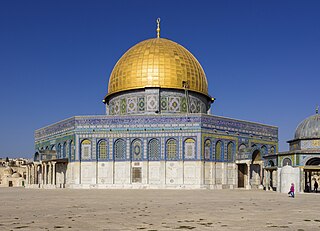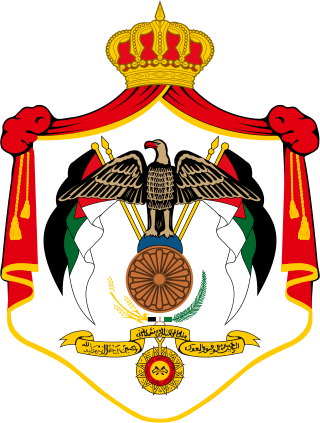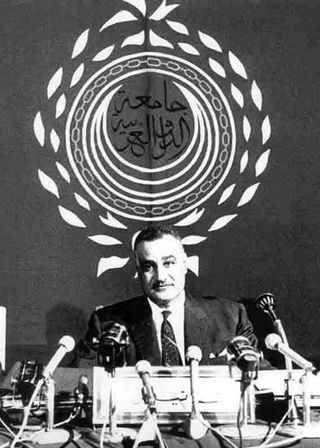
The history of the State of Palestine describes the creation and evolution of the State of Palestine in the West Bank and Gaza Strip.
Palestinian refugees are citizens of Mandatory Palestine, and their descendants, who fled or were expelled from their country over the course of the 1947–1949 Palestine war and the Six-Day War. Most Palestinian refugees live in or near 68 Palestinian refugee camps across Jordan, Lebanon, Syria, the West Bank and the Gaza Strip. In 2019 more than 5.6 million Palestinian refugees were registered with the United Nations.

The one-state solution is a proposed approach to resolving the Israeli–Palestinian conflict, according to which one state would be established between the River Jordan and the Mediterranean. Proponents of this solution advocate a single state encompassing the currently-recognized state of Israel, the West Bank and the Gaza Strip. The term one-state reality describes the belief that the current situation in Israel/Palestine is de facto a single state. It is sometimes also called a bi-national state, owing to the hope that the state would be a homeland for both Jews and Palestinians.

The history of the Israeli–Palestinian conflict traces back to the late 19th century when Zionists sought to establish a homeland for the Jewish people in Ottoman-controlled Palestine, a region roughly corresponding to the Land of Israel in Jewish tradition. The Balfour Declaration of 1917, issued by the British government, endorsed the idea of a Jewish homeland in Palestine, which led to an influx of Jewish immigrants to the region. Following World War II and the Holocaust, international pressure mounted for the establishment of a Jewish state in Palestine, leading to the creation of Israel in 1948.

The Jordanian administration of the West Bank officially began on April 24, 1950, and ended with the decision to sever ties on July 31, 1988. The period started during the 1948 Arab-Israeli War, when Jordan occupied and subsequently annexed the portion of Mandatory Palestine that became known as the West Bank, including East Jerusalem. The territory remained under Jordanian control until it was occupied by Israel during the 1967 Six Day War and eventually Jordan renounced its claim to the territory in 1988.
The Arab League was formed in Cairo on 22 March 1945 with six members: Egypt, Iraq, Transjordan, Lebanon, Saudi Arabia, and Syria. Yemen joined on 5 May 1945. Since its formation the Arab League has promoted the Palestinian Arab cause in the Israeli–Palestinian conflict, including by imposing the Arab League boycott of Israel. The Arab League opposed the United Nations Partition Plan for Palestine in 1947. On 15 May 1948, the then seven Arab League members coordinated an invasion of what was by then the former British Mandate, marking the start of the 1948 Arab–Israeli War.
The International law bearing on issues of Arab–Israeli conflict, which became a major arena of regional and international tension since the birth of Israel in 1948, resulting in several disputes between a number of Arab countries and Israel.
The Arab–Israeli conflict began in the 20th century, evolving from earlier Intercommunal violence in Mandatory Palestine. The conflict became a major international issue with the birth of Israel in 1948. The Arab–Israeli conflict has resulted in at least five major wars and a number of minor conflicts. It has also been the source of two major Palestinian uprisings (intifadas).

Israeli citizenship law details the conditions by which a person holds citizenship of Israel. The two primary pieces of legislation governing these requirements are the 1950 Law of Return and 1952 Citizenship Law.

The Arab–Israeli conflict is the phenomenon involving political tension, military conflicts, and other disputes between various Arab countries and Israel, which escalated during the 20th century. The roots of the Arab–Israeli conflict have been attributed to the support by Arab League member countries for the Palestinians, a fellow League member, in the ongoing Israeli–Palestinian conflict; this in turn has been attributed to the simultaneous rise of Zionism and Arab nationalism towards the end of the 19th century, though the two national movements had not clashed until the 1920s.

The Palestinian right of return is the political position or principle that Palestinian refugees, both first-generation refugees, as well as their descendants, have a right to return and a right to the property they themselves or their forebears left behind or were forced to leave in what is now Israel and the Palestinian territories, as part of the 1948 Palestinian expulsion and flight, a result of the 1948 Palestine war, and due to the 1967 Six-Day War.

The Palestinian Authority Passport is a passport/travel document issued since April 1995 by the Palestinian Authority to Palestinian residents of the Palestinian territories for the purpose of international travel.

From 1923 to 1948, there were seven villages in Mandatory Palestine for which the population was predominantly Shia Muslim. They were Tarbikha, Saliha, Malkiyeh, Nabi Yusha, Qadas, Hunin, and Abil al-Qamh. These villages were transferred from the French to the British sphere as a result of the border agreement of 1923. All of them were depopulated during the 1948 Arab–Israeli War and their former locations are now in northern Israel.

Mandatory Palestine passports were travel documents issued by British authorities in Mandatory Palestine to residents between 1925 and 1948. The first brown-covered passport appeared around 1927, following the issue of the Palestinian Citizenship Order, 1925. From 1926 to 1935 alone approximately 70,000 of such travel documents were issued.
Palestinians in Lebanon include the Palestinian refugees who fled to Lebanon during the 1948 Palestine War, their descendants, the Palestinian militias which resided in Lebanon in the 1970s and 1980s, and Palestinian nationals who moved to Lebanon from countries experiencing conflict, such as Syria. There are roughly 3,000 registered Palestinians and their descendants who hold no identification cards, including refugees of the 1967 Naksa. Many Palestinians in Lebanon are refugees and their descendants, who have been barred from naturalisation, retaining stateless refugee status. However, some Palestinians, mostly Christian women, have received Lebanese citizenship, in some cases through marriage with Lebanese nationals.

Palestinians in Syria are people of Palestinian origin, most of whom have been residing in Syria after they were displaced from their homeland during the 1948 Palestinian expulsion and flight. Palestinians hold most of the same rights as the Syrian population, but cannot become Syrian nationals except in rare cases. In 2011, there were 526,744 registered Palestinian refugees in Syria. Due to the Syrian Civil War, the number of registered refugees has since dropped to about 450,000 due to many Palestinians fleeing to Lebanon, Jordan or elsewhere in the region to escaping to Europe as refugees, especially to Germany and Sweden.

The 1948 Palestine war was fought in the territory of what had been, at the start of the war, British-ruled Mandatory Palestine. It was the first war of the Israeli–Palestinian conflict and the broader Arab–Israeli conflict. During the war, the British withdrew from the territory and the State of Israel was established, leading to it being known in Israel as the War of Independence.

Jordanian nationality law details the conditions by which a person is a national of Jordan. The primary law governing nationality regulations is the Jordanian Nationality Law, which came into force on 16 February 1954.

The Palestinian Citizenship Order 1925 was a law of Mandatory Palestine that created a Palestinian citizenship for residents of the territory of Palestine Mandate. It was promulgated on 24 July 1925 and came into force on 1 August 1925. The Order remained in effect until 14 May 1948, when the British withdrew from the Mandate, and Palestinian citizenship came to an end. Israel enacted a Citizenship Law in 1952, while West Bank residents came under Jordan’s nationality law.

The Casablanca Protocol, formally the Protocol for the Treatment of Palestinians in Arab States, was a statement by the Arab League on 11 September 1965, made at the 1965 Arab League summit in Casablanca, Morocco. The statement, in five articles, sought to regularize the legal protections for Palestinian refugees residing in the countries of the Arab World.














